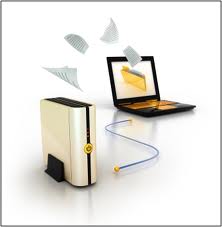Making sure your blog is protected from being totally erased is incredibly important, which is why WordPress backup tools are essential. Making sure you have these WordPress backup tools is the best way you can ensure you don’t lose everything from your blog.
Because your WordPress database as all of the information you have ever posted on your WordPress blog as well as all of the comments and links that are posted, it is a good idea to make sure all of those areas are backed up just in case your database gets accidently erased while you are making changes or if you have a corruption error. Otherwise you risk losing everything. This can be dangerous, so it is a good idea to make sure and use the necessary WordPress backup tools to make sure this doesn’t happen. Within the WordPress.org codex, you can find plenty of information on how to back up your WordPress data. We’ve also included some of this information below to help get you started.
WordPress backup tools should be used regularly depending on how often you post on your WordPress blog. The more frequently you use your blog, the more regular you should make your backups. The more backups, the merrier. Having multiple backups is never a bad thing especially if the content in your blog is incredibly important. For some who use their blog for business purposes, losing everything on the blog could be devastating. This is why having multiple backups is a good thing despite seeming excessive. Conveniently, there are ways to make sure certain areas of your blog are backed up without having to provide backups for less important areas that tend to take up a lot of data like anti-spam and statistics plugins. Just make sure those areas that do not need backed up are deselected during the backup process.
There are also ways you can make sure your backups are automated. This is a great idea for those who do not have time to waste doing regular backups. With automated backups, you can feel confident your information is backed up and won’t be lost in case of corruption or an accidental erase. You also don’t have to worry about constantly trying to remember to backup your information all of the time.
How to backup your WordPress site:
Remember, there are two parts of your WordPress site that will need backed up in case of emergency: the database and files. To do this, you will need to backup your entire site as well as the WordPress database. The WordPress site consists of the core installation, plugins, themes, files, images, Javascript scripts, PHP scrips as well as other code files in addition to any additional files or static web pages. To make sure all of these areas are backed up, you can go with a web host that provides regular backups. This is probably the easiest way to backup the software on your site. This is done regularly by the web host provider and also is easy because there is not much you have to take care of yourself. Another way is to make sure your blog is in sync with your site. Make sure to see if this is a service offered by your web host.
Another backup method would be to copy files to your desktop. Using FTP clients will help with this process. This makes it easy to copy that important information to a folder on your computer. From there, you can easily zip the content into a file to save on space. This also allows you to keep several versions of the information in case you want to make any changes. If you plan to handle the backups yourself using PHP or the cPanel assistance, be sure to make sure this will work with the assistance from your web host. If so, simply walk through the WordPress backup tools on the WordPress codex to make sure you are able to transfer your database information using phpMyAdmin. It is a pretty easy walkthrough process. Be sure to consult with your web host provider for any additional assistance, or checkout the WordPress site directly.
